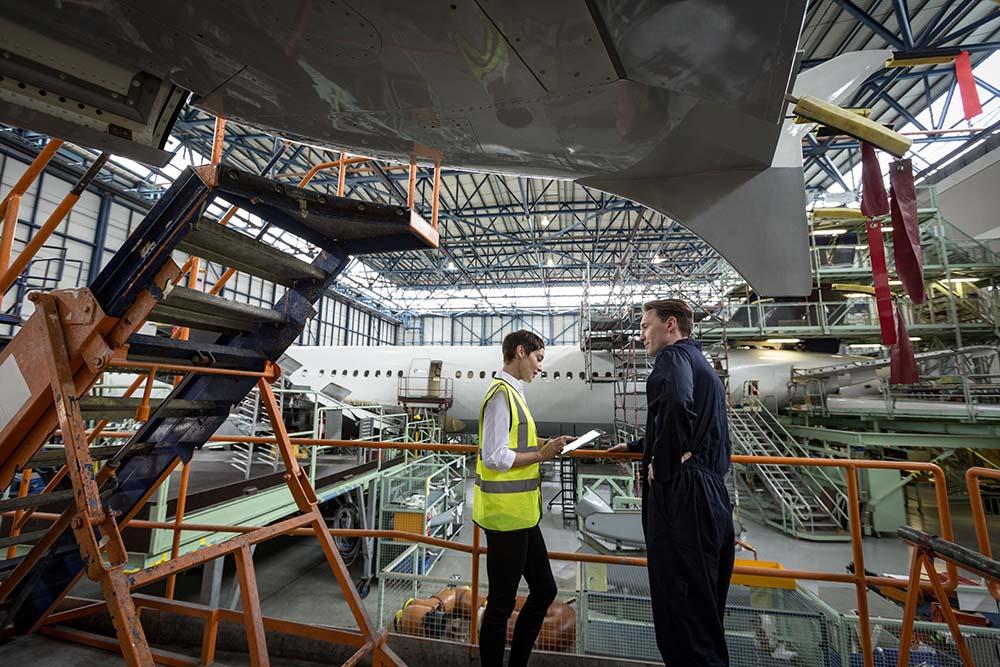
According to SITA’s latest Air Transport IT Insights report, two-thirds of airlines are now seeking to reduce paper use and nearly all the rest plan to do so by 2025. For MRO, that means paperless processes in hangars and on the line that increase mechanic productivity, reduce turnaround times and make for prompter and more accurate data entry.
Major MRO IT providers are seeing this demand for paperless in their customer bases.
IFS built the first certified mobile, paperless MRO application, and its solution now works across line, heavy and shop maintenance as well as part sourcing and procurement. At first only pioneering customers chose paperless, but an increasing portion of customers have now gone paperless, including large carriers such as Qantas, Air France, KLM and Southwest Airlines, with a combined total of more than 1,200 aircraft, according to Rob Mather, vice president of aerospace and defense at IFS.
The software works on any laptop, tablet or smartphone device. Tablets are the most common device, with iPads being the most widespread tablets. “Phones are also used in a pinch, but only for certain workflows,” Mather notes. Tablets’ ability to integrate with cameras, microphones and lidar, and their touch screen size and weight make them ideal.
Historically, these devices were shared and checked out at shift start. Now it’s becoming more common to issue devices to individual mechanics, who tend to take better care of assigned devices.
IFS software can either embed technical documents or link to document management systems. Mechanics can tap whatever data their company chooses, including task cards, all maintenance manuals, deferral references, structural repair manuals, serviceability documents and illustrated parts catalogs (IPCs). Increasingly, data is embedded in the software and accessed in workflows.
Mather says paperless cuts time required for data entry and re-keying inaccurate data. Mechanics can digitally do all the old paper-based actions, such as raising faults, completing scheduled maintenance, clearing faults, deferring or requesting deferrals of faults, requesting parts, recording inspections, recording temporary repairs, recording damage, requesting engineering support and so forth. And, with e-signatures, the software alerts mechanics of any errors or conflicts in real-time.
When a mechanic requests a part, the software alerts the supply chain. The software also enables remote support by voice or video calling, including augmented reality.
A third of TRAX customers working on more than 2,000 aircraft now use mobile apps for paperless MRO, Managing Director Chris Reed explains. He says many additional customers are planning to go paperless in upcoming projects.
TRAX offers two types of paperless mobile apps. Web apps can work on any browser-supported platform, such as PCs, laptops or tablets. TRAX’s iOS version works only on iPads. Reed says iOS is more secure, and Apple devices are preferred by a majority of customers. The variety of Android devices creates development challenges.
All TRAX apps can integrate with cameras, microphones, fingerprint or face identification and other accessories. Logon can be via PIN, fingerprint, facial recognition, password or multi-factor authentication.
TRAX mobile devices can be assigned individually to each mechanic, but most are shared among mechanics who sign devices from a smart locker that charges and manages the devices.
The mobile devices provide paperless versions of aircraft maintenance manuals, IPCs, OEM data, regulatory documents, company information, wiring documents, service bulletins, minimum equipment lists and many other documents.
Line mechanics can use their devices to monitor flights and defects, manage defects, record part switches, create task cards, close work orders, query stocks, scan barcodes, sign with e-signatures and perform many other tasks.
Product Manager John Stone says all new implementations of Ultramain’s MRO IT system are paperless. Furthermore, “All of our legacy maintenance and MRO customers are paperless, except three that have not upgraded to v9 Unity yet. And all of our electronic logbook customers are paperless.”
Ultramain’s paperless apps work on iOS, Android and Windows mobile devices. Some devices are individually assigned, but others are shared. Ultramain’s Mobile Mechanic, a digital task card app, supports kiosks.
As with TRAX, Ultramain mobile devices contain paperless versions of maintenance documents such as task cards, aircraft and component maintenance manuals, defect records, IPCs and many more.
Mechanics can use e-signatures, time stamp, record shift handovers, notes, step signoffs, task signoffs, inspector sign-offs, part orders, manage configurations and note measurements, quantities, special readings and more. “Anything that can be recorded on paper can be captured using Mobile Mechanic,” Stone stresses.
Swiss-AS’s AMOS software was late to the paperless party, but it is picking up speed fast. This is important because AMOS now supports a huge count of about 7,000 aircraft.
AMOSmobile/EXEC was the first module of AMOS’s mobile suite, designed to eventually enable paperless execution of all line and base maintenance. The IT provider allows customers to adopt EXEC in three steps, starting with apps that display MRO documents, then apps that let mechanics enter data and take actions and, finally, a capability for e-signatures. AMOS also offers a mobile, paperless app for storing parts and tools.
EXEC runs on any computer, tablet or other device and can handle manuals, diagrams, 3D graphics and videos. In late 2020, Mexico’s Viva Aerobus went live with EXEC, as did start-up Norse Atlantic Airways in late 2021. Indeed, most recent implementations of AMOS by airlines or MROs appear to be of AMOS’s mobile, paperless versions.
AMOS’s latest release, 22.12, has enhanced its paperless capabilities in several ways. Its mobile execution functions have two new apps for part requests and work-step classifications.





